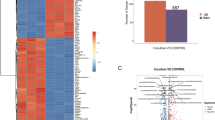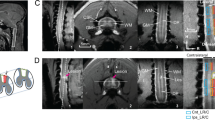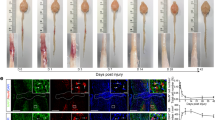Abstract
The validity of reproduction of the controlled contusion injury to the spinal cord in the experimetal animal is questioned. The dynamic pathology involving the microvasculature within the first two hours is illustrated using light microscopy. After 15-30 minutes swelling of axons and disruption of myelin sheaths become evident in most areas of white matter. After four hours microcysts have formed in the columns of white matter and are evidence of irreversible damage.
Swelling of the cord following injury results from congestion, extravasation and intracellular swelling of neurones, rather than from any demonstrable increase in extracellular fluid. Oedema was only demonstrated with perfusion fixation. Isotope and contrast myelography were compared in the identification of the degree and extent of spinal cord swelling.
Significant improvement in motor power was found in a group of paraplegic sheep treated with alpha-methyl paratyrosine. There was no significant improvement in the degree of recovery of motor power or sensation in those animals treated with intrathecal methyl prednisolone (Depo-Medrol). The histopathology in the crushed spinal cord tissue of the treated and untreated animals at various intervals of time was compared. Some possible explanations for the different patterns of clinical recovery in the treated animals are discussed.
Similar content being viewed by others
Log in or create a free account to read this content
Gain free access to this article, as well as selected content from this journal and more on nature.com
or
References
Albin, M S, White, R J, Acosta-Rua, G & Yashon, D (1968). Study of functional recovery produced by delayed localised looking after spinal cord injury on primates. J. Neurosurg. 29, 113–120.
Dohrmann, G J, Wick, K M & Bucy, P C (1973). Spinal cord blood flow in experimental traumatic paraplegia. J. Neurosurg. 38, 52–58.
Ducker, T B & Hamit, H F (1969). Experimental treatments of acute spinal cord injury. J. Neurosurg. 30, 693–697.
Kelly, D L, Lassiter, K R L, Calogero, J A & Alexander, E (1970). Effects of local hypothermia and tissue oxygen studies in experimental paraplegia. J. Neurosurg. 33, 554–563.
Naftchi, N E, Demeny, M, DeCrescito, V, Tomasula, J J, Flamm, E S & Campbell, J B (1974). Biogenic amine concentrations in traumatized spinal cords of cats— effect of drug therapy. J. Neurosurg. 40, 52–57.
Osterholm, J L & Mathews, G J (1972). Altered norepinephrine metabolism following experimental spinal cord injury. Part 1: Relationship to hemorrhagic necrosis and post-wounding neurological deficits. J. Neurosurg. 36, 386–394.
Vise, W M, Yashon, D & Hunt, W E (1974). Mechanisms of norepinephrine accumulation within sites of spinal cord injury. J. Neurosurg. 40, 76–82.
Wagner, F C, Green, G A & Bucy, P C (1971). Spinal cord edema associated with paraplegia. Proc. 18th Veterans Administration Spinal Cord Injury Conference, pp. 9–10.
Yeo, J D, Payne, W & Collins, L T (1971). Controlled experimental contusion of the spinal cord of sheep. Proc. Surgical Research Soc. of Australasia, Scientific Meeting. Aust. & N.Z. J. Surg. 41, No. 1, 89–90.
Author information
Authors and Affiliations
Rights and permissions
About this article
Cite this article
Yeo, J., Payne, W., Hinwood, B. et al. The experimental contusion injury of the spinal cord in sheep. Spinal Cord 12, 275–296 (1975). https://doi.org/10.1038/sc.1974.45
Issue date:
DOI: https://doi.org/10.1038/sc.1974.45



